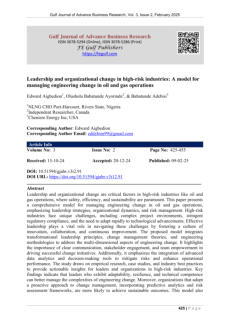Diving & ROV Procedures 2019 - Now






Authors: Adiana Milea & Lucian-Ionel Cioga
This research aims to identify and assess methods for
hazard identification, risk analysis, and occupational health
risk assessment related to these emerging technologies. It
evaluates the advantages and limitations of these
methods and examines their effectiveness in managing
new risks linked to technological advancements in
manufacturing. The findings emphasize the need for
adapting these methodologies to ensure accurate and
relevant risk management in increasingly digitized
production settings.


41 - Methods for identifying and assessing risk of Occupational
injury and desease - Their suitability for assessing emerging risks

Authors: Emmanuel Ok, & Johnson Eniola
This article discusses the role of Artificial Intelligence (AI) in
proactively identifying, assessing, and mitigating these risks
through technologies like machine learning, natural
language processing, and predictive analytics. It outlines
AI’s ability to process large data volumes and forecast
threats, enhancing areas such as cybersecurity, regulatory
compliance, and climate change management. While
acknowledging challenges like data quality and
algorithmic biases, the article advocates for the integration
of AI into risk management frameworks to foster resilience
against emerging uncertainties.


42 - Artificial Intelligence as a Tool for Managing Uncertainty and
Emerging Risks

These diving tables are the result of COMEX studies and
were first published by the French ministry of labour in
1992 under the name MT-92. There is no
change of the initial tables in the new version published in
2019, except that the medical table COMEX CX 18 has
been added to the CX 12 and CX 30. The main changes
of French regulations 2019 are with the divers’
certification system. These tables remain one of the best
decompression model, and are among the most simple to
implement.
Note that this document is edited in French. However, an
English version of the MT92 is available in the folder “Old
Tables”
Click on the image of the cover to open it.




IMCA provides numerous guidelines that discuss all
aspects of offshore operations. These documents that
were previously downloadable for free are today sold to
people and organizations that are not members of the
association.
They can be bought and downloaded by clicking on the
picture of the cover, or at this address: https://www.imca-
int.com/publications/





International Association of Oil and gas producers (IOGP)
is an organization that defends the interest of some
multinational petroleum companies such as Shell, Exxon,
BP, Total, and others.
This organization acts as a group of pressure to impose
the point of view of its members to the contractors
working for them and try to influence national and
international safety organizations to establish its members
in a dominant position.
Their publications on diving and ROV operations are of a
low technical level. They can be accessed on their website
or by clicking on this text or the image of the cover.






NORMAM-15/DPC procedures propose saturations and air
diving procedures.
The saturation procedures are a development of the
COMEX procedures and are considered among the best
ones for diving operations up to 350 m for which they
have been specifically developed.
These procedures are those selected in the “saturation
diving handbook” Diving & ROV Specialists. They are also
explained in the diving study #5 CCO Ltd, “Implement
NORMAM-15/DPC saturation diving procedures”. Both
documents are available in Documents/Documents
Diving & ROV Specialists.
Note that NORMAM-15 DPC is recommended by the
Diving Medical Advisory Committee (DMAC) for deep
saturation diving operations.
This book is in Portuguese

The work of the Diving Medical Advisory Committee is
reflected in its series of guidance notes concerning various
aspects of diving and diving medical practice. All current
guidances aer available for download free of charge.
Clicking on this text or the picture of the cover aside allows
access to the list of documents, which includes details of
superseded and withdrawn publications.


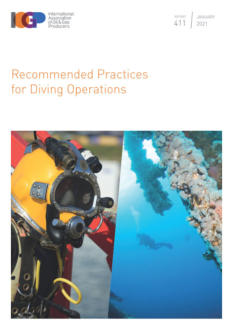


This document describes a methodology for the use of
established Occupational Exposure Limits (OELs) to the
hyperbaric setting, taking into account the changes in
absolute pressure and exposure duration, such that the
resultant Hyperbaric Occupational Exposure Limits
(HOELs) represent adequate control for the hyperbaric
environment.
This document should be associated with the UK HSE
document EH40 “workplace exposure limits” (see below).
Note that this procedure is purely theoretical.
Clicking on the picture download the version stored on
our server, clicking on the text download the
document form the UK HSE server.


This document contains a list of hazardous substances
and the exposure limits to these contaminants at the
surface. The procedures indicated in the document
EH75/2 above should be applied for hyperbaric
exposures. It is the reason it is displayed here.
Note that this procedure is purely theoretical, which is
why it is available here instead of on the page “Diving &
ROV Procedures”.
Clicking on the picture download the version stored on
our server, clicking on the text download the
document form the UK HSE server.
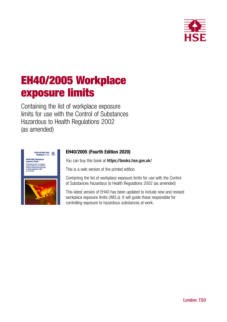


Year of publication: 2019
Author: Francis Hermans
Abstract:
Whether on the surface or underwater, to burn and turn
into iron oxide, a metal (iron) needs some supply of pure
oxygen.
In order to obtain maximum efficiency, most
manufacturers of cutting material as well as some cutting
manuals, advise to use an oxygen purity of at least 99, 5 %
and predict that it is impossible to cut as soon as the
purity of oxygen becomes equal to or less than 95%. Is it a
myth or a reality?





Year of publication: 2019
Author: Francis Hermans
Abstract:
This document describes various tests carried out in
freshwater to check the flammability and/or explosiveness
of the residual gases produced during cutting with
exothermic electrodes. The results show that, contrary to
what is generally thought, the gases rising to the surface
contained a relatively low percentage of hydrogen which
was well below the lower limit of flammability. At first
glance, and subject to further study, it seems that the
origin of the rare underwater explosions related to
exothermic cutting in freshwater is not due to an excess
of hydrogen but rather to a combustible gas from
another source.





Year of publication: 2021
Author: Francis Hermans
Abstract:
Statistics show that fatal accidents due to explosions linked
to underwater cutting are relatively high. Various
techniques (diamond wire, hydraulic shears, and hydro-
abrasive jet) exist and are already used. Nevertheless,
these tools cannot be used in all situations, and therefore
thermal cutting is not yet ready to be stopped.
This document, which has no scientific vocation, explains
the causes, effects, and consequences of these accidents
to prevent them from happening.


Year of publication: 2020
Authors: Joseph H. Tarnecki, William F. Patterson III
Abstract:
Instruments are often deployed at depth for weeks to
years for a variety of marine applications. In many cases,
divers can be deployed to retrieve instruments, but they
are constrained by depth limitations and safety concerns.
Acoustic release technology can also be employed but
can add considerable expense, and acoustic releases will
at times fail. To answer such problems, the authors explain
a simple method that utilizes a commercially available
mooring hook integrated with a mini remotely operated
vehicle to attach lines to instruments deployed on the
seafloor, which can then be winched to the surface.





This manual, that supersedes the rev. 1 published in 2008,
provides the US Navy general guidance and basic
procedures for diving in contaminated water. Because of
the wide variability in contaminants, potential exposure
levels and other variables, only general guidance and
recommended practices are provided.
Ref: SS521-AJ-PRO-010 - Published in 2019




This document is not related to diving. However the
decompression plan provided can be used for some
accidents linked to air diving.
Reference: SH420-AA-pRO-010


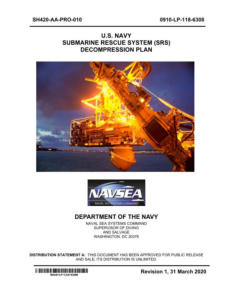

Contributors:
Brad Cole, David Dodd, Randy Jacobs, Eric Kampert, Mark
Klein, Keith Kinsella, Phil Newsum, Dave Olack, Richard
Pepin, Gwen Reynolds, Kyra Richter, John Shober, & Albert
Wong.
Between June 2019 and July 2021, five diving fatalities
occurred at power-generation facilities in the USA due to
differential pressure (Delta-P). For this reason, and at the
request of the OSHA's Office of Maritime Enforcement, the
Association of Diving Contractors International (ADCI) has
organized a team of experts and published this document.




The Irish Health and Safety Authority (the ‘Authority’),
with the consent of Pat Breen TD, Minister of State, at the
Department of Business, Enterprise, and Innovation, has
published this code of practice entitled “Code of Practice
for Offshore Diving” in accordance with Section 60 of the
Safety, Health, and Welfare at Work Act 2005 (the ‘2005
Act’). This code of practice provides practical guidance as
to the observance of the provisions of the Safety, Health
and Welfare at Work (Diving) Regulations 2018 (S.I. No.
254 of 2018).
This code of practice came into operation on May 1st
2019.


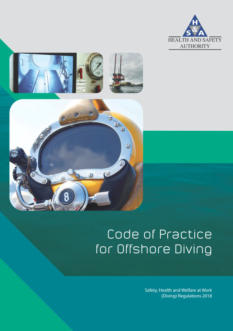


The US Bureau of Reclamation conducts various
underwater inspection and maintenance programs that
include divers use. This Diving Safe Practices Manual
(DSPM) has been developed to ensure employee safety
and regulatory compliance.
This manual is intended to be the baseline for diving policy
and is designed to address the most common Reclamation
diving activities.



Authors:
Chenyu Zhao a, Philipp R. Thies a , Lars Johanning.
This paper couples an inspection class ROV with an
autonomous surface vehicle (ASV) via a launch and
recovery system (LARS) in a nonlinear numerical model.
Operational inspection missions with static and moving
targets are modeled for this ASV/ROV system. The paper
reports the following distinctive mission profiles: i) pipeline
inspection, ii) floating offshore wind turbine (FOWT)
mooring line inspection, and iii) circumferential weld
surface scan at the FOWT spar.



Authors: Natalie Summers, Geir Johnsen, Aksel Mogstad.
Håvard Løvås, Glaucia Fragoso, and Jørgen Berge
This document describes an Underwater Hyperspectral
Imager (UHI) deployed on an instrument-carrying
platform consisting of two interconnected mini-ROVs
(Remotely Operated Vehicle) for the
mapping and monitoring of Arctic macroalgal habitats in
Kongsfjorden (Svalbard) during the Polar Night. The mini-
ROV-UHI system is easy to transport, assemble and deploy
from shore, even under the dark, icy and cold conditions
of the Arctic Polar Night. Two persons can operate the
system, keeping operational costs low.




Authors:
Dave Chen Lung Chong, Ave Suhendra
Suhaili, Sok Mooi Ng, Wan Hariz Fadli Wan Shafie,
Biramarta Isnadi, Riaz Khan, Kheng Hoong Lau,
Nurzarina Hassan, M Faqrudin B Ismail.
Mini Remotely Operated Vehicle (mini-ROV)
technology has been utilized to perform the
underwater inspection with optimized Risk-based
Underwater Inspection (RBUI) scope for offshore
platforms, which conventionally utilize divers and ROV
supported by Dynamic Positioning Diving Support
Vessel (DPDSV). This technology was introduced by
launching the mini-ROV from the platform deck to
perform General Visual Inspection
(GVI), Cathodic Potential (CP) Survey, Flooded
Member Detection (FMD) & Ultrasonic Thickness (UT)
measurement with customized mini-ROV integration with
another tooling.




This decree has been published by the French
government at the attention of companies exposing
workers to the hyperbaric risk covered by mention A
(underwater construction).
This document is the complement of the diving
procedures 2019 (see the document above)
This document is in French, and there is no English
version.




Publisher:
Employment and labour department of the republic of
South Africa
This document is a complement of the codes of practice
for diving


This document, Published in January 2021, iprovides
useful information regarding calculations and relevant
practices regarding the organization of the rigging, the
pumping procedures, and other necessary activities to
save or recover a ship. As for the documents above, the
guidelines it provides can be used for other works than
ship salvage.





This instruction provides guidance to Occupational Safety
and Health Administration (OSHA) National, Regional, and
Area Offices; industry employer and employee groups;
State programs; and federal agencies concerning OSHA’s
policy and procedures for implementing intervention and
inspection programs to reduce injuries, illnesses and
fatalities, and to eliminate workplace hazards found in
commercial diving operations.



This document represents the minimum safety standards
for diving under the auspices of the National Oceanic and
Atmospheric Administration (NOAA) as of the approval
date of this manual.

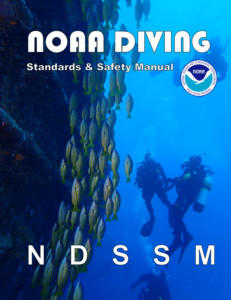

Click on the
octopus to return to
the top of the page
Note: Links to organizations such as IMCA, DMAC, or others frequently
publishing new or updated guidelines are at the bottom of the page.

This document outlines appropriate management
practices to deter piracy and enhance maritime security
for vessels and mariners operating off the coast of West
Africa, including the Gulf of Guinea.
Authors:
ICS, BIMCO, IGP&I Clubs, INTERCARGO, INTERTANKO,
and OCIMF




This document is made for Instruments of the
Organization that do not adequately address diving safety
issues. Its goal is to:
Provide a minimum international standard for the design,
construction, installation and survey of diving systems
Facilitate safe diving operations from diving platforms and
achieve a level of safety equivalent to that required by
SOLAS for ships engaged on international voyages;
Enable the international movement and safe operation of
diving units.



Authors: Jacquomo Monk, Neville Barrett, Todd Bond,
Ashley Fowler, Dianne McLean, Julian Partridge,
Nicholas Perkins, Rachel Przeslawski, Paul G
Thomson, & Joel Williams.
This manual intends to provide comprehensive
guidelines on consistently and effectively using Remotely
Operated Vehicles (ROVs) for sampling marine benthic
assemblages. It aims to standardize protocols for
collecting still and video imagery of fish and seabed
habitats, ensuring that research is statistically sound and
comparable across different studies. It also addresses the
use of various ROV classes and their limitations and offers
guidance on equipment, preparation, and procedures
related to ROV-based surveys within Australia's marine
environments.


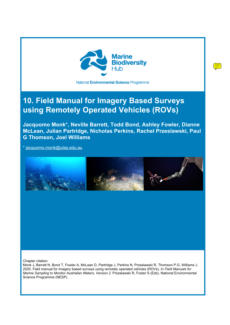


This UK Health and Safety Executive (HSE) document
provides comprehensive guidance on addressing the
challenges associated with shift work and fatigue in
offshore environments. It emphasizes the importance of
understanding the impact of shift patterns on workers'
health and safety, offers strategies to mitigate fatigue-
related risks, and outlines relevant practices for designing
shift schedules, implementing fatigue management
systems, and promoting a culture of safety and well-being
among offshore personnel.



This document outlines the scope and applicability of
procedures that govern diving operations for the
Environmental Protection Agency (EPA) employees and
contractors. It specifies to whom these procedures apply
and emphasizes adherence to EPA policies during
underwater activities.





The UK Health and Safety Executive (HSE) document
titled "Medical Examination and Assessment of Working
Divers (MA1)" provides comprehensive guidelines for the
medical evaluation of professional divers. It outlines the
necessary medical standards and procedures to ensure
that divers are fit to perform their duties safely. The
document specifies the frequency of medical
examinations, the qualifications required for medical
examiners, and the criteria for assessing a diver's fitness. It
also addresses the potential health risks associated with
diving and the importance of maintaining a high health
and safety standard in the diving industry.





Authors: J. Risberg, G. Gundersen, O. Sande Eftedal
This publication of the revision #6 contains tables for
diving on air or nitrox and therapeutic recompression
procedures for decompression illness and other ailments
requiring hyperbaric treatment.
The most crucial changes in this edition include closed
bell (TUP) decompression tables, guidance on how
oxygen toxicity should be calculated, and procedures for
emergency decompression.




The Dutch legislation on working conditions, particularly
concerning hyperbaric labour, has evolved to ensure
safety and compliance in specialized fields like diving and
caisson work. Over time, the Netherlands Labour
Authority has refined its oversight to adapt to changing
workplace risks and practices, resulting in stronger
regulations for these activities and the requirement for
them to be reported to authorities.


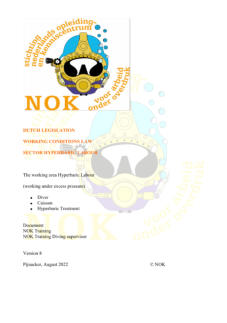
26 - Dutch legislation - working conditions - Hyperbaric labor

The ITA Working Group 5 aims to enhance safety
standards during tunneling projects. This group
collaborates with organizations like the British Tunnelling
Society (BTS) and its Compressed Air Working Group
(CAWG) to address specific challenges, such as working
in high-pressure compressed air environments. This
document supersedes the previous March 2018 version.



36 - ITA Working Group 5 ‘Health & Safety in Works’ In Association
with the British Tunnelling Society Compressed Air Working
Group - March 2024

On April 22, 2024, the French Ministry of Labor issued a
decree addressing hyperbaric work performed without
immersion. This regulation outlines safety protocols,
medical monitoring, and specific requirements for
workers exposed to hyperbaric conditions without being
submerged in water. It also incorporates decompression
tables, which were previously published with the MT 92
diving tables.



37 - French Ministry of Labour: Decree of April 22, 2024, relating to
hyperbaric work performed without immersion (mention D)

The Consensus Standards for Commercial Diving and
Underwater Operations - Revision 6.5 is the latest edition
published by the Association of Diving Contractors
International (ADCI) in January 2025, outlining the
organization's safety and operational standards. A gap
analysis with Edition 6.4 is provided at the beginning of
the document, which can also be downloaded from the
organization's website.


48 - ADCI - International consensus for commercial diving and
underwater operations - Edition 6.5


The UK Diving at Work Regulations 1997 are designed to
ensure the safety of all diving projects. The Health and
Safety Executive (HSE) maintains a list of approved diving
qualifications that are recognized under these
regulations.


07 - UK HSE - Diving at Work Regulations 1997 List of Approved
Diving Qualifications - 2020
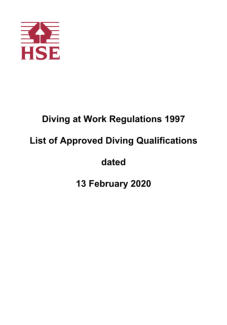

The document "Tauchen mit Mischgas" is a guide that
reflects historical developments and provides up-to-date
information for modern divers. It serves as a resource for
both professional and recreational divers who engage in
deep diving activities in Germany.


12 - Germany: Tauchen mit Mischgas (Diving with mixed gas)
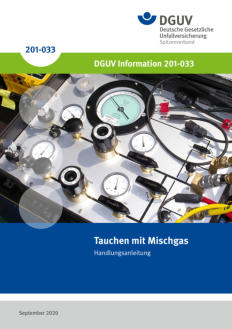

Authors: Valtteri Laine, Floris Goerlandt, Osiris Valdez
Banda, Michael Baldauf, Yvonne Koldenhof,
Jorma Rytkonen
This paper provides a robust framework for managing
risks associated with maritime pollution. It integrates
concepts, processes, and tools to enhance the
preparedness and response capabilities of authorities
responsible for protecting marine environments. The
framework is designed to be adaptable and can be
tailored to the specific needs and contexts of different
maritime regions.


19 - A risk management framework for maritime Pollution
Preparedness and Response: Concepts, processes and tools
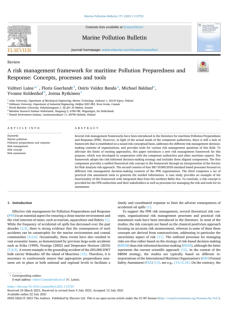

This document is part of the 2023 Working Conditions
Catalogue in the Netherlands. It specifically addresses the
requirements and guidelines for diving work, caisson
work, and other activities conducted under hyperbaric
conditions.


29 - The Netherlands: Working under Hyperbaric Conditions -
System and Maintenance Requirements - WOD-SOE -
Document code: CAT 002.4 UK
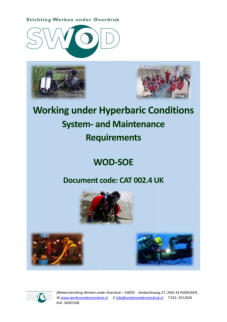

As mentioned in its title, this document is designed to
outline the rules for diving work using SCUBA in The
Netherlands. Note that we recommend using surface-
supplied systems instead of SCUBA for working
operations.


30 - The Netherlands: Working under Hyperbaric Conditions -
Diving Work - SCUBA- Category A1 - Document code CAT
001.5 II UK
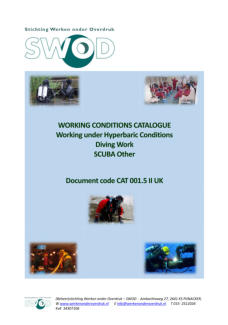

This Act is a piece of legislation that aims to improve the
work environment and prevent occupational injuries and
diseases in Finland. It encompasses a broad range of
topics related to occupational safety and health,
including employers' obligations, workers' rights, and
specific provisions for various work environments.


32 - Finland - Occupational Safety and Health Act #738/2002 with
amendments 2023 - English version


Published by the directoria de portos e costa (direction of
ports and coasts)
The NORMAM-222/DPC refers to the standards set by
the Brazilian Maritime Authority, specifically the
Directorate of Ports and Coasts (DPC) of the Brazilian
Navy, for underwater activities. These standards are part
of a broader set of maritime regulations known as
"NORMAMs", which cover various aspects of marine
safety, security, and environmental protection.
The NORMAM-222/DPC supersedes the previous
Normam-15/DPC set of standards


34 - Normam-222/DPC - Maritime Authority Standards for
underwater Activities - Portugese version (Directoria de portos e
costa)


Authors: Oleg Bazaluk, Vitaliy Tsopa, Serhii Cheberiachko,
Oleg Deryugin, Dmytro Radchuk, Oleksandr
Borovytskyi, and Vasyl Lozynskyi
This paper aims to provide the main principles and
practical aspects of a model for identifying, assessing, and
managing occupational and ergonomic risks. The
research focuses on the impact of various dangerous
factors related to working posture, pace, rhythm of work
performance, equipment, and individual characteristics of
employees' health conditions


35 - Ergonomic risk management process for safety and health at
work
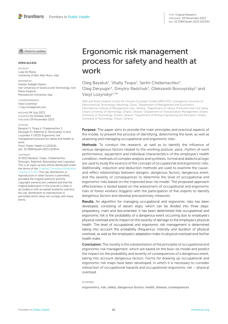

This document outlines the Working Conditions
Catalogue for diving work conducted under hyperbaric
conditions, relevant to both employers and employees. It
identifies potential risks associated with such work and
specifies minimum control measures required to manage
these risks. Additionally, it lists related documents,
including system and maintenance requirements, and
details the Diving Project Plan along with risk evaluation.


39 - The Netherlands: Working under Hyperbaric Conditions -
Diving Work - SSE Document code CAT 001.6 III UK
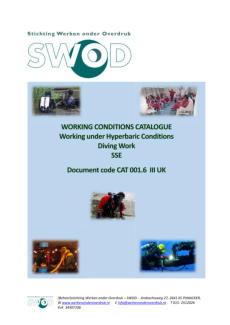

This document falls under the guideline series maintained
by SWOD (Foundation Working under Hyperbaric
Conditions, Stichting Werken onder Overdruk), in
cooperation with the Dutch Ministry of Social Affairs and
Employment
It applies to all diving and caisson operations under
hyperbaric conditions, including dry diving bells and
saturation diving, across civilian, fire brigade, and defense
sectors in the Netherlands


40 - The Netherlands: Working under Hyperbaric Conditions -
Diving Work - Dry diving bell/saturation - Document code CAT
001.6 IV UK
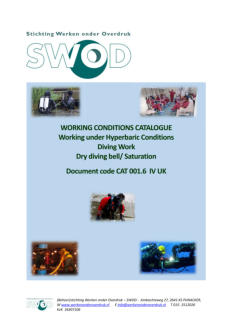

These regulations apply when workers are exposed to a
relative pressure greater than 100 hectopascals, whether
with or without immersion. This includes activities such as
underwater public works, oil industry works, tunnel
boring, and work in hyperbaric chambers


45 - France: Code du travail - Chapitre Ier: Prévention des risques en
milieu hyperbare - version 2025 - French version
(Labor Code - Chapter I: Prevention of risks in hyperbaric
environments - version 2025)
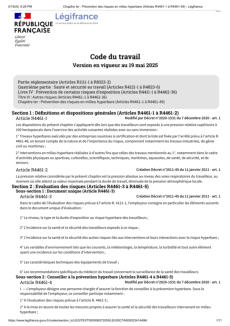
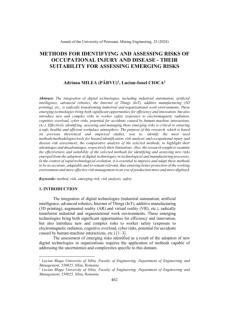
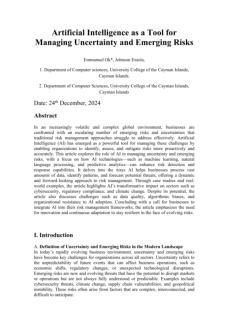

Authors: Kimberly Galvez et al.
NOAA Ocean Exploration is dedicated to exploring the
unknown ocean, unlocking its potential through scientific
discovery, technological advancements, and data delivery.
By working closely with partners across the public, private,
and academic sectors, NOAA is filling gaps in US citizens'
fundamental understanding of the marine environment.
This allows the USA's relevant administrations to protect
ocean health, sustainably manage marine resources,
accelerate the country's economic growth, better
understand the changing environment, and enhance
citizens' appreciation of the ocean's importance in their
everyday lives.


43 - NOAA Ocean Exploration ROV and Telepresence Deepwater
Exploration Procedures Manual
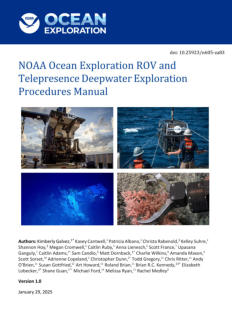

Authors: Edward Aigbedion, Olushola Babatunde
Ayorinde, & Babatunde Adebisi
This paper outlines a comprehensive model for managing
engineering change in oil and gas industries, emphasizing
leadership, organizational dynamics, and risk
management. It highlights the importance of
transformational leadership, clear communication,
stakeholder engagement, and advanced data analytics to
navigate complex project environments and regulatory
challenges. The framework stresses the need for
adaptability, resilience, and proactive change
management practices, including training and mitigating
resistance. Recommendations include fostering a safety-
centric, innovative culture, leveraging technology, and
promoting collaboration to ensure sustainable and
efficient operational improvements.


44 - Leadership and organizational change in high-risk industries: A
model for managing engineering change in oil and gas
operations
